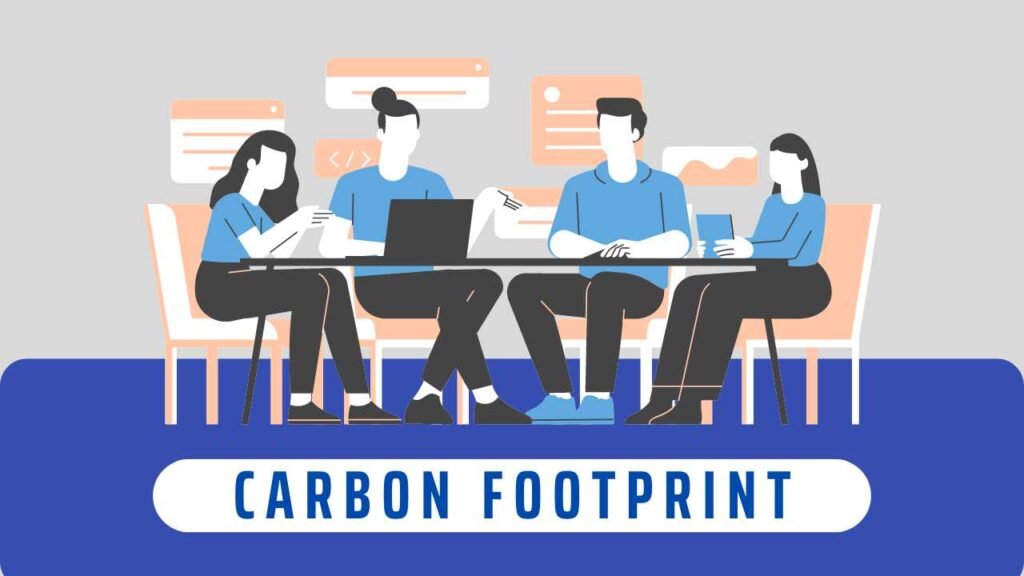Carbon Footprint – GD/WAT Topic
What is Carbon Footprint?
Over the past few years, global warming has become a major issue as its effects are visible. Global warming is leading to climate changes which badly affect the environmental cycle of the planet. The main reason behind this is the emission of greenhouse gases like carbon dioxide, methane, etc., as they trap the sun’s heat and adds to global temperature. So, the amount of greenhouse gases emitted directly or indirectly by human activities is known as ‘Carbon Footprint’.

QUOTES
“Climate change is not just about carbon dioxide levels and melting polar ice caps. It is also about our public health and protecting our Earth for the future generation.” – Mike Quigley
“The growing evidence of climate change is forcing attention on carbon emissions and their reduction.” – Gordon Brown
STATISTICS – What Numbers have to Say?
- Compared to 2019, Global energy-related carbon dioxide emission is reduced to 31.5 billion metric tons in 2020. This reduction was the biggest annual reduction since World War 2.
- As of 2019, the biggest cumulative emitter of CO2 into the atmosphere was the United States with emission of more than 400 billion metric tons.
- China’s share in global emission of CO2 increased from 0.37% in 1925 to 13.65% in 2019. Currently, it is the second-highest overall emitter.
- India’s per capita CO2 emission is 1.9 metric tons as of 2019 which was 1.1 metric tons of carbon dioxide per capita in 2001.
DESCRIPTION – Let’s take a Deep Dive
As we are experiencing many side effects of climate change and we know the reason behind it. Ee should try to reduce greenhouse gas emission. To take some preventive measures against it we have to first understand the causes of carbon footprint and how to measure it.
What causes a Carbon Footprint?
- The burning of fossil fuel produces a large amount of carbon
- Major industrial sources of carbon footprint are power plants, residential buildings, as well as energy industry processes and losses, iron and steel manufacturing, coal mining, and chemical and petrochemical industries, electricity-producing industries.
- Deforestation, forest degradation, and wastewater also cause a carbon footprint.
- Agriculture is one of the most significant contributors to carbon footprint as farming produces the highest amount of methane.
- Meat consumption is also one of the factors that support carbon footprint.
- To get rid of waste, a large amount of waste is burned, which leads to the emission of greenhouse gases.
- Road transportation, aeroplanes, and ships release carbon dioxide and contribute to the carbon footprint.
How to calculate carbon footprint?
Once the amount of carbon released into the atmosphere is known then one can make a plan to reduce it. The carbon footprint of an organization, person, or nation can be measured by undertaking a GHG (Greenhouse Gas) emissions assessment, a life cycle assessment, or other calculative activities known as carbon accounting.
Individual Carbon footprint = There are several websites available that conduct an online assessment for measuring carbon footprint. These online assessments include a detailed questionnaire about one’s day-to-day activities like diet and transportation. Based on the answers they estimate the carbon footprint.
Organization or product’s Carbon footprint = Industries use Life Cycle Assessment (LCA) tool, which has carbon footprint as one parameter.
Effect of carbon footprint
- The major effect is global warming which harms our environment and all living beings.
- Due to the rise in temperature glaciers are melting and ultimately rising sea level.
- It can also lead to the migration problem since the livelihood of many people will be destroyed after a rise in sea level or melting of ice.
- The emission of carbon dioxide causes air pollution which is severely affecting the respiratory system of human beings.
- Animals are generally very sensitive to change in the environment. Many species have gone extinct because of these changes.
- Due to global warming water temperature is also increasing which will decrease oxygen levels in the water. This may turn into the death of many aquatic animals.
- Our entire environmental cycle is dependent on one another so the effect on one species can show an impact on others and it will disturb the complete cycle.
How to reduce individual carbon footprint?
- Transportation – Avoid the use of private vehicles and start the use of public transport or cycles or walking. Electric vehicles are also the best option to use.
- Food – Reduce the consumption of animal products especially beef. Buy organic food from local vendors. While cooking covers the pots, it will reduce the use of energy.
- Water – Use a washing machine, dishwasher, or machines that require more water at their full capacity. If you have access to a rooftop you can do rainwater harvesting as an alternative to groundwater.
- Energy usage – Program energy devices in a way that they will perform only when you are at home. Improve the insulation of your place, it will automatically maintain the temperature and reduce the need for other devices. If not using then switch off all the devices. Use renewable energy to reduce carbon emissions.
- Waste Control – Reduce your needs, Refuse what is not necessary, Reuse as many times as it can, Recycle it, and again use it.
Ecological footprint Vs Carbon footprint
The ecological footprint is a broad term as it includes the total resources humans consume. It is a measure of biologically productive land and other resources required to satisfy the demand of human beings and to absorb the waste it generates including carbon emission. So carbon footprint is a component of ecological footprint. The carbon footprint makes up approximately 60% of the total Ecological Footprint.
CONCLUSION
The rise in carbon footprint is threatening the livelihood of all living beings. Emitted carbon trapped in the atmosphere causes global warming due to which polar ice is melting, sea level is rising, the temperature of the earth has increased by 1% before industrialization. All these things are affecting all living beings. Some of the species are on the verge of extinction. As we all are interdependent this will lead to disturbing the entire cycle of livelihood.
But if we change our attitude and consumption behaviour, we can minimize the carbon footprint and save the planet. For this, we should take responsibility for our actions and try to reduce carbon emissions. Apart from this one should educate others also about it. If we neglect all these things today then future generations will not be able to get a clean and pollution-free environment.
So this is high time for everyone to take some precautionary measures to minimize carbon footprint.
Author – Vaishnavi Guntoorkar
Must Explore




